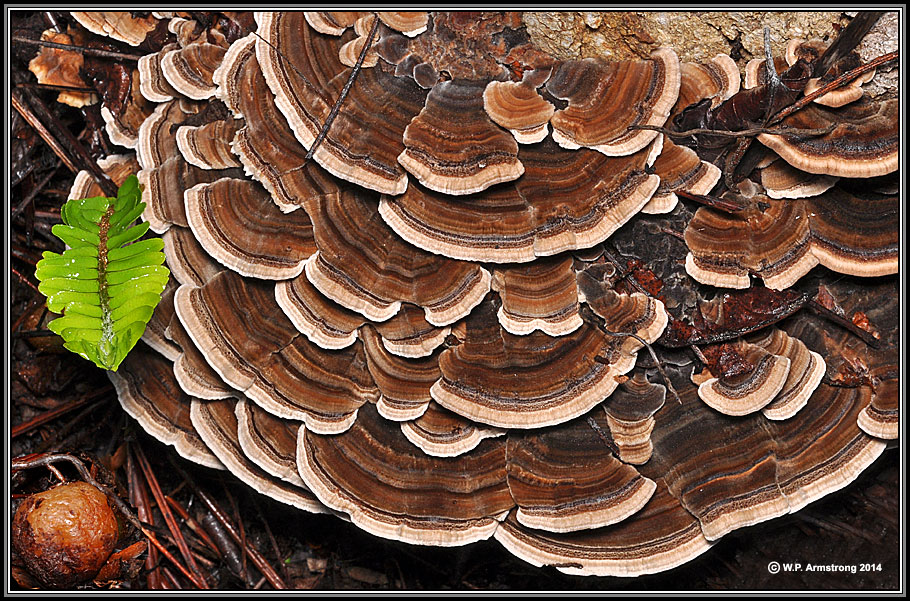A Symbiotic relationship between various living creatures.
Take Willk's excellent answer of a type of fungus and add another creature to it like social spiders (1) which could work together to create protective webbing between the blades of the fungus, adding some distance and cusioning to blows and adding a lot of protection against piercing and slashing.
Since we are basically designing our own creatures to form living armor we can start combining traits and alter some parameters.
Instead of spiders, we design a community of spidersilk-weaving ants using a high-strength spidersilk like that of the barkspider which is currently the toughest biological material created (2). Such ants can have castes, some of which could have other purposes like gathering food for the fungus, making repairs, performing soldier functions like biting or even using stingers and the like. So that when a weapon strikes some of them might be able to climb the weapon and inconvenience the weapon wielder and more things like that. Food gathering ants could be equipped with wings so that they can feed the symbiotic creature when its worn while following the distinct smell and feremones of this hive-like creature.
While we are at it we could add some kind of limited form of limpet creature who is fed by the ants and fungus and generates teeth that are incorporated into the fungal structure. These teeth are incredibly hard and are some of the hardest biological material possible. (3)
This way you have essentially created a composite armor, incorporating the fungus for volume and form, the limpet teeth for added hardness and the webs for extra structural strength in case the fungus is split as well as toughness. On top of that the armor can feed itself if you place it on the ground for a while as the ants gather food for all organisms and any attacks made against the armor could result in ants being able to counter-attack. The only reason I'm not adding things like those flesh-disolving murder-wasps is that its too hard too aim them while it is possible to designate area's on the armor where soldiers congregate with less risk to the user or friendlies accidentally aggrevating them (who will definitely be using something similar).
1: https://en.m.wikipedia.org/wiki/Social_spider
2: https://en.m.wikipedia.org/wiki/Darwin%27s_bark_spider
3: https://www.uh.edu/engines/epi2996.htm#:~:text=A%20limpet%20eats%20by%20scraping,wire%20could%20lift%20an%20automobile.&text=Back%20in%201979%2C%20the%20great%20writer%2Fscientist%20Arthur%20C.

